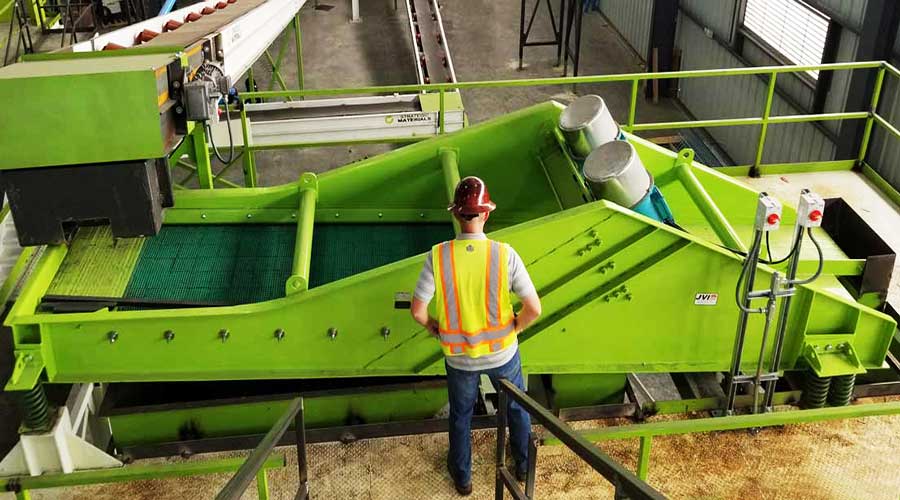
4 Vibratory Screen Applications that Improve Bulk Material Processing
Vibratory screens improve bulk material processing in industrial applications by improving the efficiency of the downstream process equipment. They do this by screening out unwanted material from the process and allowing only the desired, on spec material to continue. When helping integrate vibratory screens into our client’s processes William Neundorfer & Co. has found that there are usually one of four basic screening applications that serve our clients needs. Which screen we recommend is dependent on that client’s process, material, and desired separation. In this article we breakdown the four basic screening applications, how the respective screen separates bulk material, and what improvements they provide to industrial processes.
Four Vibratory Screen Applications
Classifying Applications
Classifying screens are designed to separate material into a specified “cut” sizes based on the requirements of the next piece of equipment in the industrial process. By ensuring on-spec material is fed to the downstream process a more consistent, higher quality product is produced.
Grizzly Applications
Grizzly screens are typically found in heavy duty mining / aggregate processes and are used to separate coarse (or over size) material from fine “on spec” material. This is typically accomplished by having the material move across a series of grizzly fingers that allow on-spec material to fall through and over size material to be sent to crushers to be reduced in size. Removing the on-spec material before the crusher increases the wear life of the crusher and downstream belt conveyor.
Scalping (Safety) Applications
Scalping screens, also known as safety screens, are used to remove unwanted material and foreign objects from the production process. While moving across the screen the desired material falls through the screen deck while the unwanted material is taken out. These screens are used to keep items such as dropped tools or hard hats from making their way into downstream process equipment. Keeping these unwanted items out of the industrial process increases up time by ensuring the down stream equipment doesn’t become jammed or damaged halting production until it can be repaired.
Dewatering Applications
Dewatering screens are designed to reduce the moisture content of the material that is fed across them. As the screen vibrates it moves the material across its inclined screen deck and separates excess moisture from the material that falls through the screen decks openings. Removing the excess moisture allows the downstream dryers to work more efficiently, by reducing energy consumption, and provide a more consistent final product.
Vibratory equipment screens out unwanted material from “on spec” material and enable improved bulk material processing. These are the four basic screening applications that William Neundorfer & Co. most commonly observes as solutions to our client’s bulk material processing challenges. WNC works closely with our clients to provide custom designed solutions for their specific needs. Contact us today if you have any questions about vibratory screens and how they could help with your application.
For more information or details on how we can help you select the right equipment for your application, contact Wm Neundorfer & Co today.
We have the expertise and experience to ensure you get the advice and recommendations you require for your specific application.